Earlier this year we undertook research for the UK Government’s Department for Digital, Culture, Media and Sport on technology packaging labelling. The results were published as part of a consultation on regulatory proposals on consumer IoT security.
As an agency focused on helping clients communicate about their technology-based products and services, we’re often working on projects involving product packaging. The ever growing consumer awareness, interests and concerns around environmental and sustainable issues are driving companies to adopt ways of displaying their efforts in these areas.
Over the years, this has increased the number of recycling-related symbolling in use across packaging – as shown in our report for DCMS. But how well understood are these symbols? We reviewed existing research on public perception and audited some of the most common recycling symbols to find out.
Public sentiment
Britain Thinks, a market intelligence agency, surveyed 2,000 UK adults to discover attitudes surrounding recycling and the circular economy. SUEZ, a waste management firm, stated that the survey uncovers that “consumers want manufacturers to take more financial responsibility for the waste arising from the products and packaging they sell in the UK.” In addition, according to PEFC (the Programme for the Endorsement of Forest Certification), consumers are now far better informed and knowledgeable about their purchasing decisions and how they affect the environment.
Even though 52% of respondents across the world said their sustainable purchase decisions are influenced by packaging, many aren’t sure of what the symbols mean, impacting the work towards sustainability.
Nielsen’s global survey on corporate social responsibility notes that “consumers around the world are making adjustments in their shopping habits.” Also finding that 81% of respondents felt that companies should help improve the environment.
Packaging symbol review
As the research shows, consumer interest in corporate responsibility is becoming a useful differentiator for organisations. A number of labels are available to represent efforts in sustainability. We’ve reviewed the most common of these symbols.
FSC Worldwide
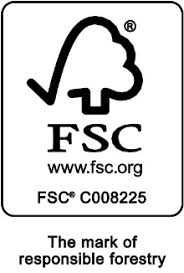
This “tick tree” label is used to show that the product is certified under the FSC system. When you see this label, you can buy with the confidence that you are helping to ensure forests are alive for generations to come. Products made with wood and paper from FSC forests are marked with the “tick tree” label. It shows that the product complies with the highest social and environmental standards on the market and confirms that you won’t be harming the world’s forests by buying the item. In order for companies to display this label in their packaging, they must adhere to the standards and principles of the Forest Stewardship Council. FSC monitors the use of the label.
Programme for the Endorsement of Forest Certification
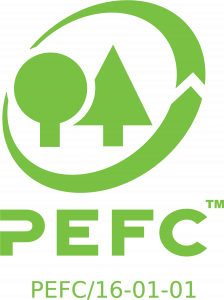
“The EU harmonized standard for compostable and biodegradable packaging.” The PEFC focuses on endorsing national forest certification systems. They provide guidance on promoting sustainable forest management. PEFC’s 2017 consumer survey highlighted that more than 80% of consumers wanted certified companies to use certification symbols. The PEFC label is a trusted sign that wood-based products are sustainably sourced. This label is becoming popular as more and more companies are keen to demonstrate their commitment to responsible sourcing of paper and packaging products. In order to display the PEFC label, companies must be selling PEFC-certified products. PEFC monitors the use of the label.
The Mobius Loop
The Mobius Loop symbol indicates that the product is capable of being recycled. However, this icon does not guarantee that the material will be accepted by your local recycling centre or collection and it does not signify that the product is made from recycled materials. Sometimes this symbol is used with a percentage figure in the middle to explain that the packaging contains x% of recycled material. There is not much certification surrounding this label meaning companies can post this on their packaging relatively easily.
The Green Dot

Despite appearing very similar to the Mobius Loop, the Green Dot does not necessarily mean that the packaging is recyclable, will be recycled or has been recycled. This symbol is used on packaging to signify that the producer has made a financial contribution towards the recovery and recycling of packaging in Europe.
Recycle Now
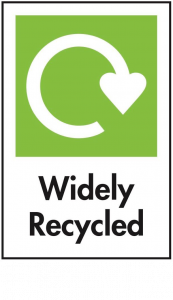
The Recycle Now icon is part of the national recycling campaign, supported and funded by the Government. This type of label appears on all sorts of packaging – from soft drink cans, to bread bags and plastic toiletry bottles. The icon, combined with the information on it, tells you will tell you whether the packaging is likely to be collected for recycling or if you can take it to your local recycling centre. Recycle now icons are monitored by ORPL. Companies pay a fee to ORPL to cover the running costs, which include the monitoring of the use of the label.
Waste Electricals

This icon is for electronic items and shows that it is covered by the Waste Electrical and Electronic Equipment Directive. This WEEE Directive places responsibility for the disposal of waste electrical equipment on the manufacturer. The manufacturer is also obliged to use the collected waste in an eco-friendly manner, either by ecological disposal or by reuse/refurbishment. Often found on household batteries, this symbol indicates that they should not be disposed of in household waste. Many supermarkets now have facilities to dispose of household batteries. The company must work to establish an infrastructure for collecting WEEE, so that consumers can return the WEEE free of charge. The WEEE Directive monitors this process.
Paper
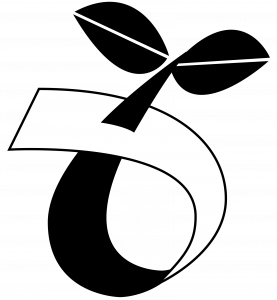
The ‘seedling’ is a registered trademark of Europea Bioplastics. This icon can be placed on the packaging of products that are certified to be industrially compostable according to the European standard. The Europea Bioplastics published guidelines on the use of the label. They state that the certification shows the product can fully biodegrade in an industrial composting plant. The product must be formally certified to display the label. The certification process is carried out by the independent certifiers DIN CERTCO and Vincotte.
Vegetable oil ink
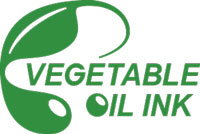
This label was introduced by Japan Printing Ink Makers Association. Vegetable ink is made with vegetable oil, such as soybean or linseed oil, as a substitute for petroleum. These inks significantly reduce the amount of ozone depleting Volatile Organic Compounds (VOCs) released into the air during Heatset Offset printing. Vegetable oil inks have much lower rates of VOCs emissions than mineral oil inks. Unlike mineral inks, they are derived from renewable resources and inks made from them are more easily removed from waste paper during de-inking. Pigments in the vegetable oil inks do not usually contain heavy metals like mineral inks.
Soy Ink

Soy ink is made from soybeans, a 100% renewable resource. In order to make soy ink, soybean oil is slightly refined and then blended with pigments, resins and waxes. Like other vegetable inks, soy based ink is thought to be more eco-friendly and makes it easier to recycle paper.
Tidyman
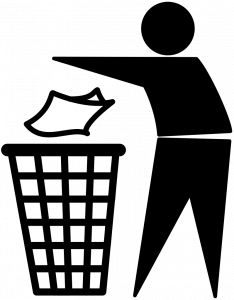
This symbol from Keep Britain Tidy asks you not to litter. It doesn’t relate to recycling but is a reminder to be a good citizen, disposing of the item in the most appropriate manner.
Full Circle
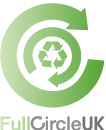
The Full Circle symbol shows that a paper bag has the most positive environmental credentials in the marketplace. The closed loop ‘Full Circle’ process has three steps: collection, manufacturing and distribution. The entire production system involved in accrediting packaging the Full Circle symbol is environmentally sound by design and fully consistent with circular economy values.
Conclusion
The sheer number of symbols to signify specific types of recycling in the industry is more than likely to cause confusion among consumers. The Mobius Loop and the Recycle Now icons are probably the most widely-recognised however understanding of what they represent can vary. For example, the Mobius Loop shows less certification while the Recycle Now symbols have Government support and offer many variations that sit across specific recycling situations. These variations don’t help consumers understanding.
In turn, there seems to be little in the way of legislation on labelling – organisations could use similar symbols without necessarily being aligned with any schemes. In addition, the variances in local infrastructure across the UK means not all icons truly represent what a consumer may think. This is shown with the use of caveats such as ‘widely-recycled’ or ‘check local centre’.
With the ongoing environmental challenges a clear set of standardised symbols and labelling scheme could help understanding and recognition for both organisations and consumers.
For more information:
As part of the ‘Recycle now’ campaign, this article provides more detailed explanations for recycling icons: https://www.recyclenow.com/recycling-knowledge/packaging-symbols-explained
Our work with the Department for Digital, Culture, Media and Sport (DCMS) focused on labelling in-use and offers more perspective on this subject: https://www.gov.uk/government/consultations/consultation-on-regulatory-proposals-on-consumer-iot-security.
Have a call
We’d love to talk to you about how Make it Clear can support your organisation. Book a call here.

